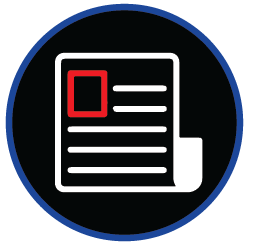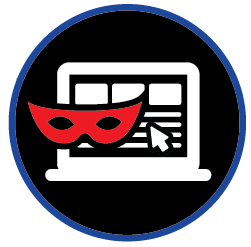
Brand Damage Susceptibility
ThreatNG Score Unveils Brand Reputation Risks Across Your Digital Ecosystem
The ThreatNG Brand Damage Susceptibility Score goes beyond traditional brand monitoring tools. It leverages ThreatNG's robust security suite, which includes External Attack Surface Management (EASM), Digital Risk Protection (DRP), and extensive intelligence sources. This comprehensive approach assesses not just your organization but also your third-party vendors and entire supply chain. Analyzing news sentiment, financial data (including ESG violations, lawsuits, and negative press), and Domain Intelligence (Including Bug Bounty Programs), the ThreatNG score pinpoints potential brand reputation weaknesses before they escalate into major crises. This proactive approach empowers businesses, enabling them to make informed decisions, mitigate risks, and achieve optimal brand protection outcomes across their entire digital ecosystem.
ThreatNG Brand Damage Susceptibility Score: Severity Levels Explained
The ThreatNG Brand Damage Susceptibility Score utilizes a letter grading system (A-F) to communicate the severity of your organization's vulnerability to reputational damage. This grading system aligns with the ThreatNG Digital Presence Triad, providing a clear picture of the risk based on three key factors:
Feasibility
This assesses the ease with which negative information or events could potentially damage your brand reputation. Grade A indicates a strong brand with a positive online presence and limited opportunities for attackers or disgruntled stakeholders to inflict damage. Conversely, Grade F signifies a brand with significant vulnerabilities, such as a history of negative press or ethical controversies, making it easier for reputational damage.
Believability
Evaluate the likelihood of negative information or events being perceived as credible and damaging by your target audiences. A low score (A) suggests a low chance of negative information being believed, often due to a strong brand reputation or effective crisis communication strategies. A high score (F) indicates a high likelihood of negative information being readily believed due to factors like past controversies or a lack of trust in the brand.
Impact
Considers the potential consequences of a successful brand damage attempt. Grade A signifies minimal potential damage, such as a short-lived negative online mentions. Grade F indicates a scenario with severe consequences, such as a widespread boycott, loss of customer trust, regulatory fines, or even financial collapse.
How the Grades Translate to Severity
A (Low Severity)
Your brand has a strong reputation, limited vulnerabilities to attack, and a low likelihood of negative information being believed or causing significant damage.
B (Moderate Severity)
While your brand might have some vulnerabilities or a history of minor controversies, the likelihood of negative information being widely believed or causing significant damage is still considered moderate.
C (Medium Severity)
This indicates a balance between the ease of damaging your reputation (Feasibility), the likelihood of negative information being believed (Believability), and the potential consequences (Impact). Remediating these moderate risks is recommended to strengthen your brand's resilience.
D (High Severity)
Your brand shows vulnerabilities that could be exploited to damage your reputation. There is a moderate likelihood of negative information being believed and causing significant consequences. Urgent action is needed to address these vulnerabilities and implement more robust brand protection measures.
F (Critical Severity)
This signifies the highest risk scenario. Your brand has significant vulnerabilities, is highly likely to believe negative information, and could suffer severe consequences from a successful brand damage attempt. Immediate remediation is crucial to prevent a significant reputational crisis.
The ThreatNG Advantage
Considering all three factors (Feasibility, Believability, and Impact), the ThreatNG score goes beyond a simple sentiment analysis tool. It prioritizes brand reputation risks based on real-world scenarios, allowing you to focus resources on the areas with the most significant potential for damage. This focus on the Digital Presence Triad helps organizations achieve optimal brand protection outcomes by first addressing the most critical vulnerabilities.

Safeguarding Your Reputation: Actionable Insights from ThreatNG
In today's digital age, brand reputation is a critical asset. The ThreatNG Brand Damage Susceptibility Score transcends traditional sentiment analysis tools by offering a wealth of actionable insights fueled by a powerful combination of data and intelligence. This approach empowers organizations to manage brand reputation risks and prevent reputational crises proactively. Here's how ThreatNG delivers superior value:
Actionable Insights and Data-Driven Objectivity
ThreatNG goes beyond simply identifying negative sentiment or potential brand damage triggers. The score analyzes your organization, third-party vendors, and the supply chain by leveraging External Attack Surface Management (EASM) and Digital Risk Protection (DRP) capabilities. This comprehensive view, bolstered by vast intelligence repositories analyzing financial data, news sentiment, and domain health, paints an objective picture of your brand's susceptibility to reputational damage. This data-driven approach gives you actionable insights pinpointing specific vulnerabilities like negative news coverage, ESG controversies, or social media sentiment. This allows you to prioritize remediation efforts and make informed decisions to strengthen your brand reputation.
Continuous Monitoring and Improvement
ThreatNG isn't a one-time assessment. Its continuous monitoring capabilities provide ongoing insights into brand sentiment and potential threats. This proactive approach allows you to track progress on addressing vulnerabilities, identify emerging reputational risks, and measure the effectiveness of your brand protection efforts over time. It empowers you to adapt and improve your communication strategies and crisis management plans, providing a sense of security in safeguarding your brand reputation.
Comparison and Benchmarking
The ThreatNG score allows for comparison and benchmarking against industry standards or your historical data. This comparative analysis helps you understand how your brand reputation stacks up against competitors and measures the effectiveness of your brand protection efforts over time.
Actionable Recommendations
The score doesn't just highlight problems; it provides clear, actionable recommendations for addressing brand damage vulnerabilities. These recommendations are tailored to the specific details of your brand's online presence, sentiment analysis, and identified ESG or financial risks. This empowers you to prioritize resources and focus on the areas that will significantly mitigate potential reputational damage.
Clear and Transparent Scoring
ThreatNG's scoring system is clear and transparent. Because it is substantiated by the results of EASM, DRP, and extensive intelligence repositories, including Sentiment and Financials analysis and Domain Intelligence investigations, the score provides a verifiable and objective assessment of your brand's susceptibility to reputational damage. This transparency fosters trust, making you feel informed and confident in the assessment process, and empowers stakeholders to make informed decisions to safeguard your brand reputation confidently.

Unveiling Your Organization's Digital Weaknesses: A Spectrum of ThreatNG Security Ratings
The ThreatNG Brand Damage Susceptibility Score is a powerful tool, but it's just one facet of ThreatNG's comprehensive digital risk assessment suite. While this score focuses on reputational risks, ThreatNG offers a broader range of Susceptibility and Exposure ratings that paint a holistic picture of your organization's digital security posture, third-party vendors, and entire supply chain.
Here's why a comprehensive approach matters:
Interconnected Threats
Security vulnerabilities in one area can have cascading effects across your digital ecosystem. For instance, a data leak from a third-party vendor could damage your brand reputation and expose your organization to regulatory fines. ThreatNG's suite of ratings helps you identify and address these interconnected threats.
Proactive Risk Management
Assessing various vulnerabilities gives you a 360-degree view of your security risks. This allows you to proactively manage risks and prioritize resources in the areas with the most significant potential impact, maximizing your security investments.
Supply Chain Security
Today's businesses are reliant on complex supply chains. ThreatNG's assessments extend beyond your organization, providing visibility into the security posture of your vendors and partners and creating a more secure digital ecosystem.
ThreatNG's Spectrum of Security Ratings:
BEC & Phishing Susceptibility
Assesses the risk of falling victim to Business Email Compromise and phishing attacks.
Mobile App Exposure
It reveals vulnerabilities, such as exposed credentials and API keys, within mobile apps that could lead to data breaches or unauthorized access, causing significant brand damage and harming the overall security posture.
Subdomain Takeover Susceptibility
Identifies weaknesses in subdomain configurations that could allow attackers to take control.
Breach & Ransomware Susceptibility
Assesses the likelihood of falling victim to ransomware attacks, considering exposed ports, known vulnerabilities, and dark web presence
Cyber Risk Exposure
This section provides a broad view of external attack surface vulnerabilities, encompassing the technology stack, cloud environments, and code exposure.
Data Leak Susceptibility
Measures the potential for data breaches based on cloud configurations, SaaS usage, and code repository security.
ESG Exposure
Evaluate the organization's environmental, social, and governance practices to identify potential security risks.
Supply Chain & Third Party Exposure
Analyzes the security posture of your vendors and partners, highlighting potential vulnerabilities within your supply chain.
Web Application Hijacking Susceptibility
Analyzes web applications for vulnerabilities attackers could exploit.
Neglecting to assess these various aspects of digital security can leave organizations vulnerable to a wide range of cyberattacks and reputational crises.
Security for Everyone: Proactive Threat Management
ThreatNG empowers organizations of all sizes, third-party vendors, and supply chain partners to assess and mitigate digital risks proactively. This collective effort creates a more secure digital ecosystem for everyone.
By leveraging ThreatNG's comprehensive suite of Susceptibility and Exposure ratings, you can clearly understand your vulnerabilities and their potential impact on your organization. It empowers you to make informed decisions, prioritize resources, and implement adequate security measures to safeguard your valuable assets across your digital landscape.

Security Ratings Use Cases
ThreatNG is a security rating platform enabling businesses to evaluate and monitor their security posture and that of their third-party vendors. By leveraging our extensive security information database, ThreatNG provides valuable insights into potential vulnerabilities and risk exposure, enabling organizations to take proactive measures to strengthen their security defenses. This section will explore some use cases where ThreatNG's security ratings can help organizations better understand their security posture and mitigate risk.
























